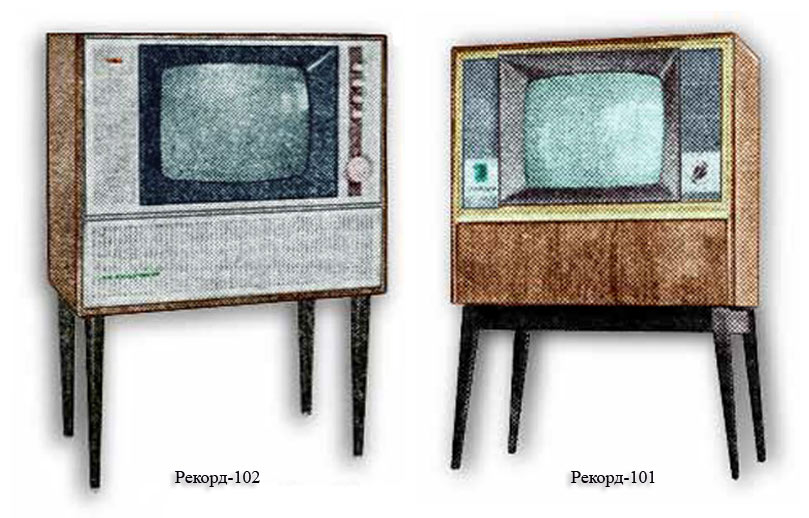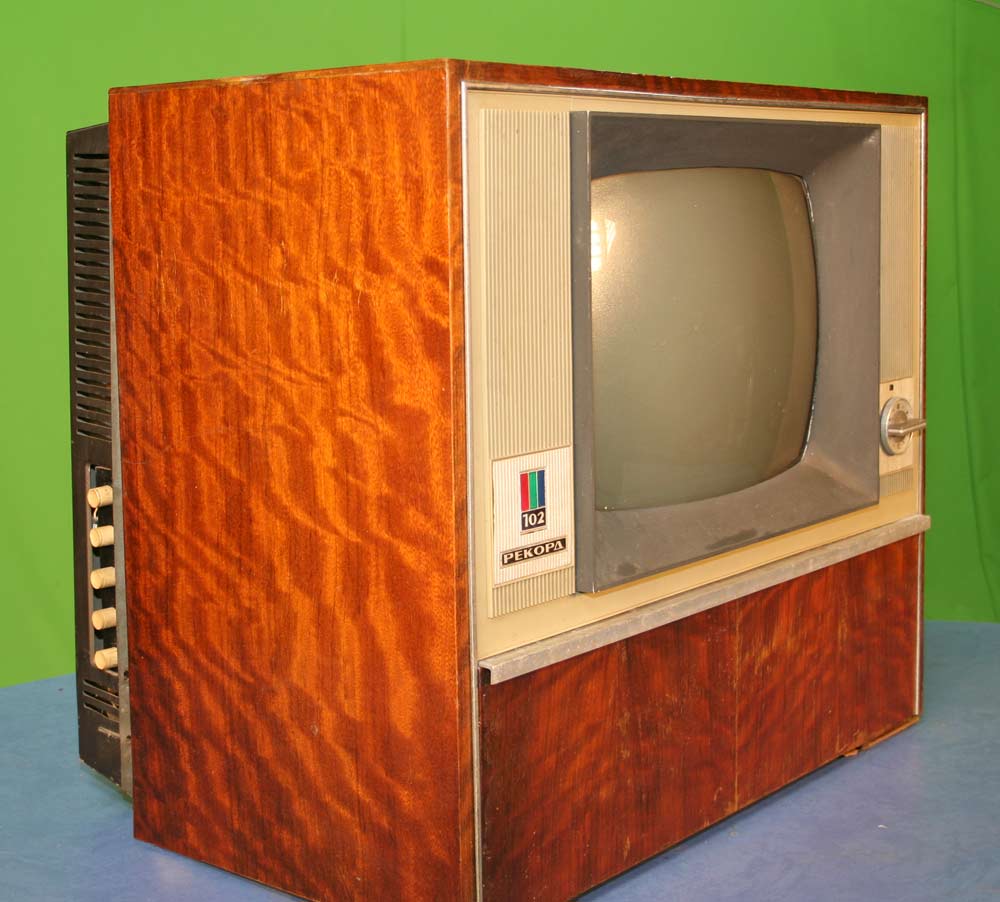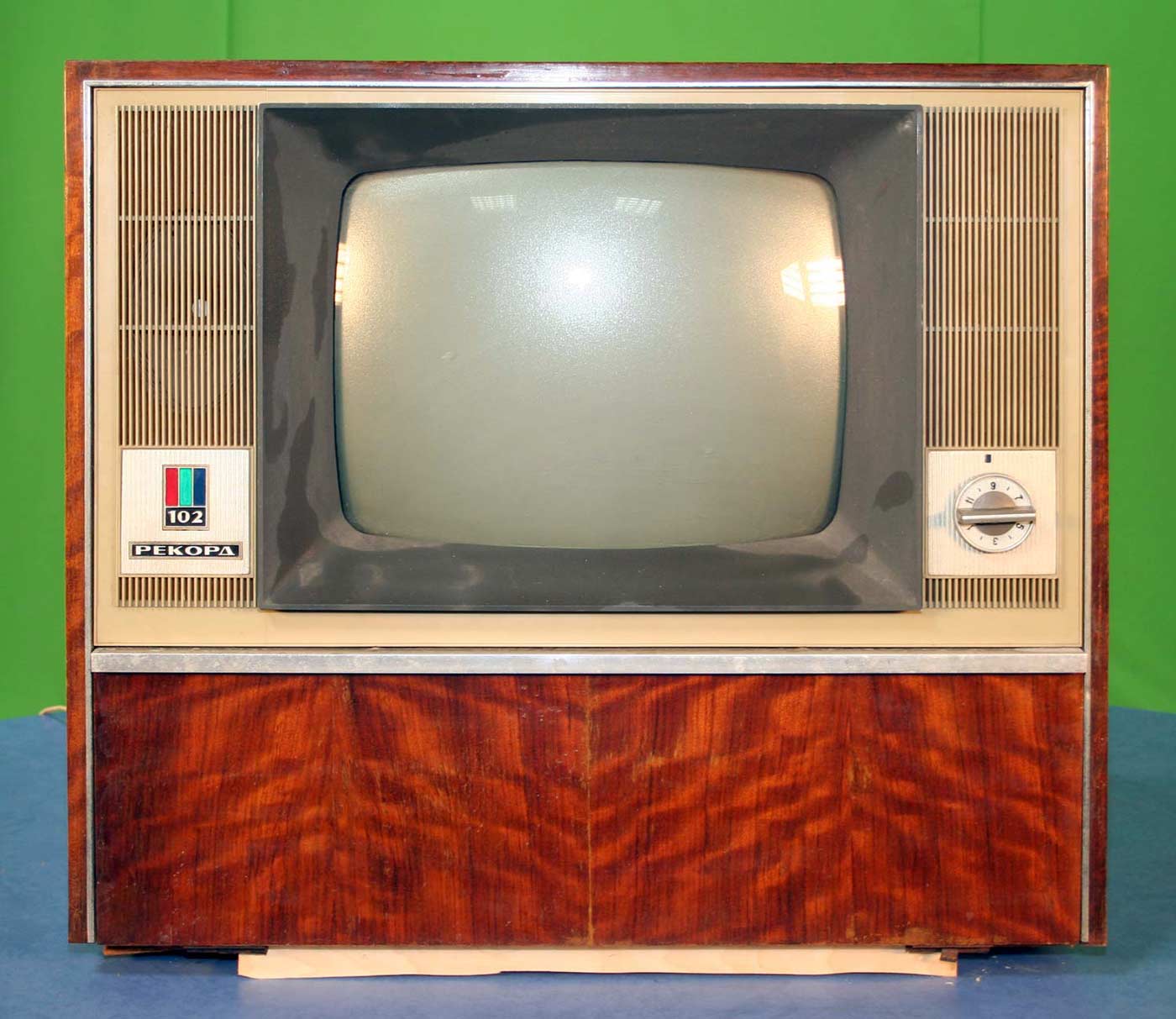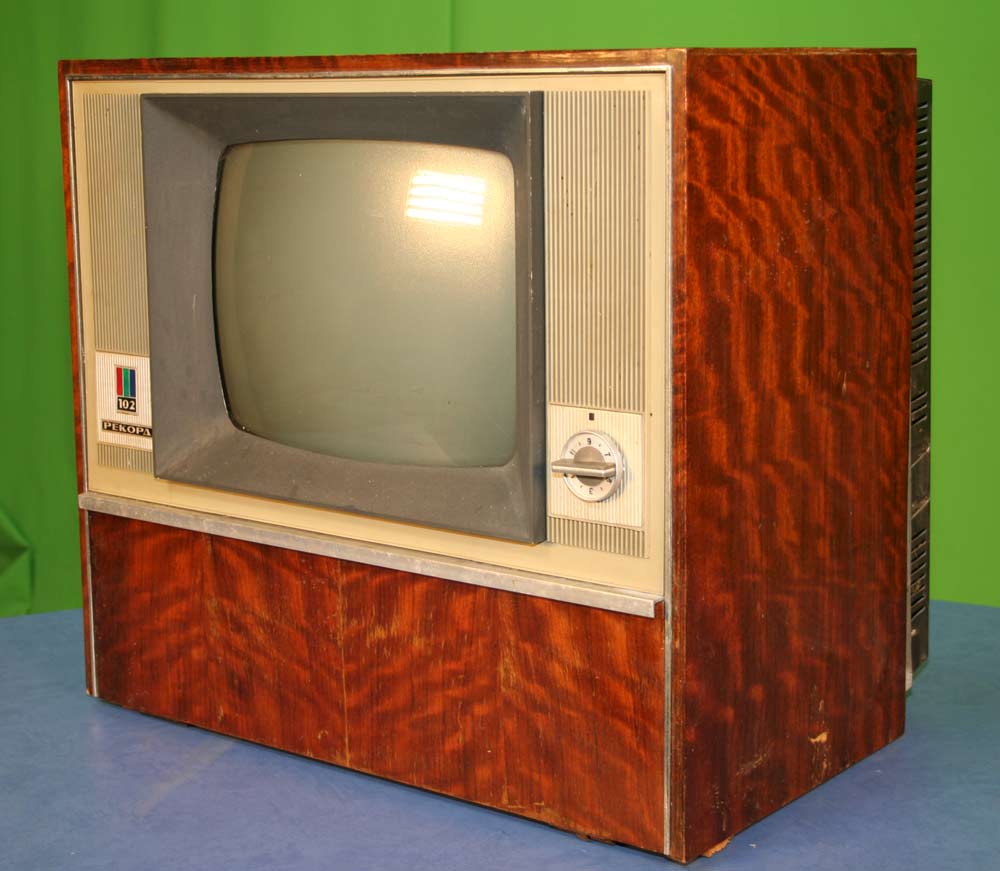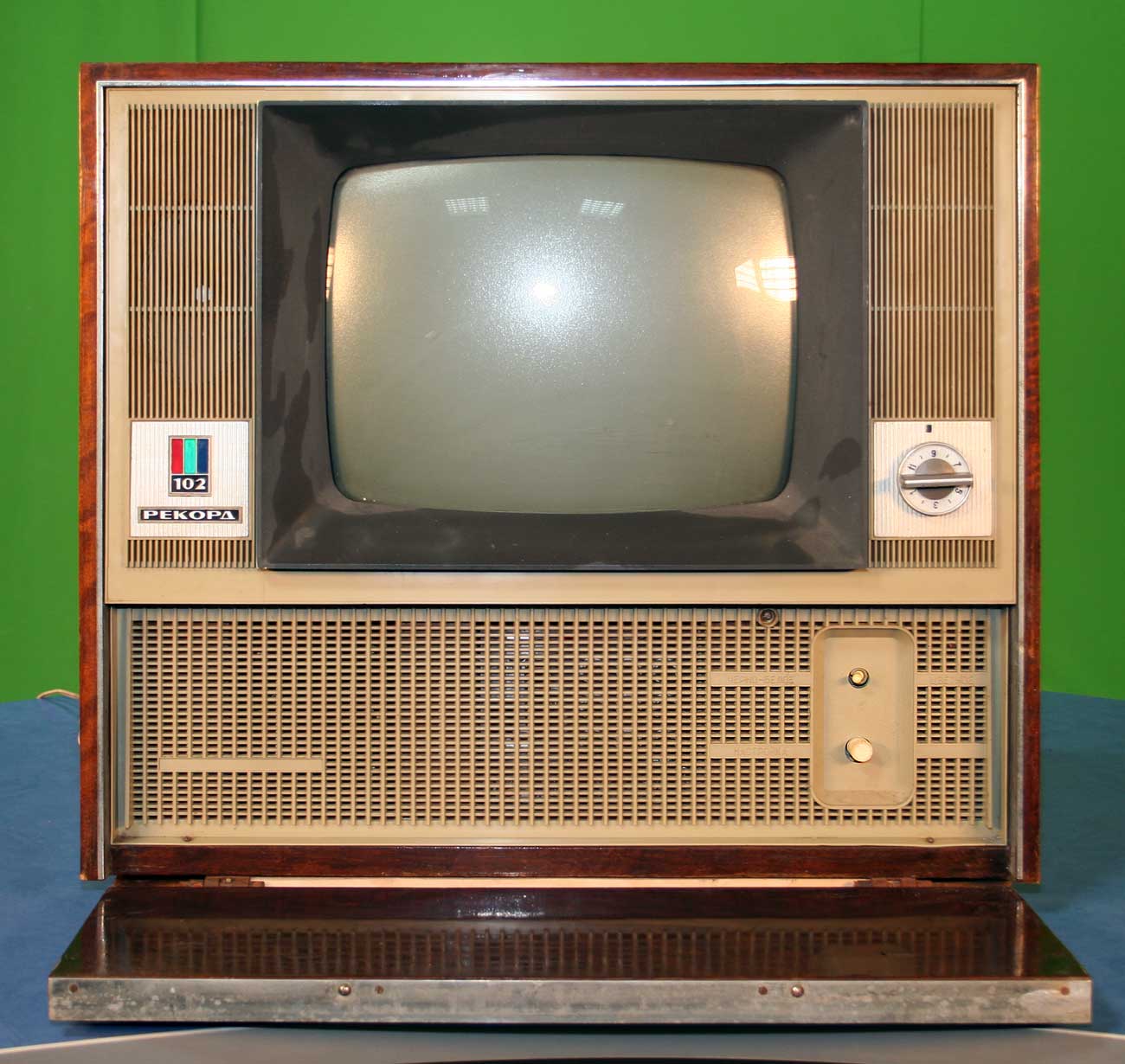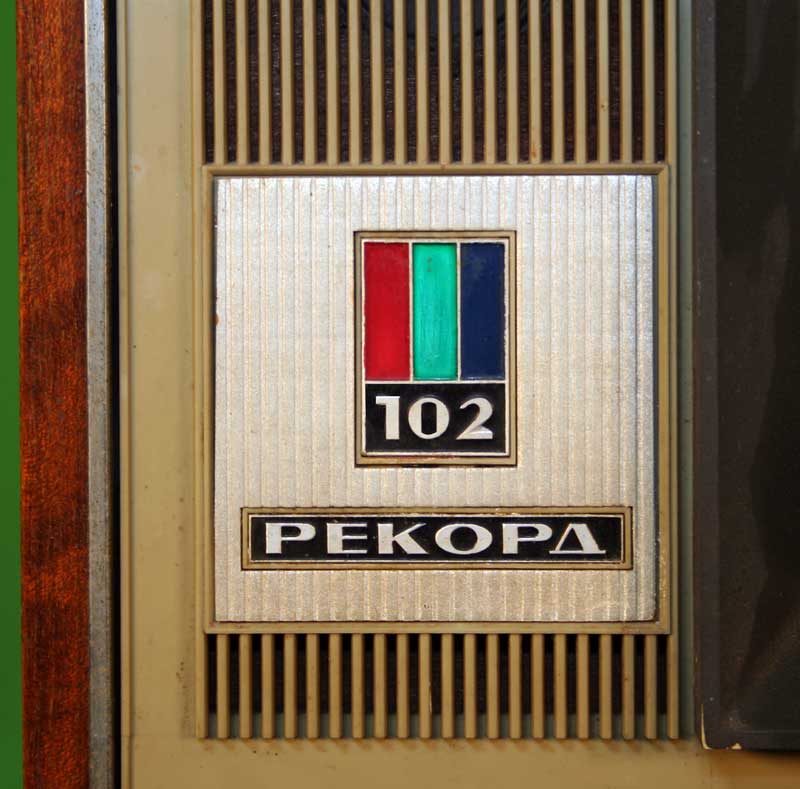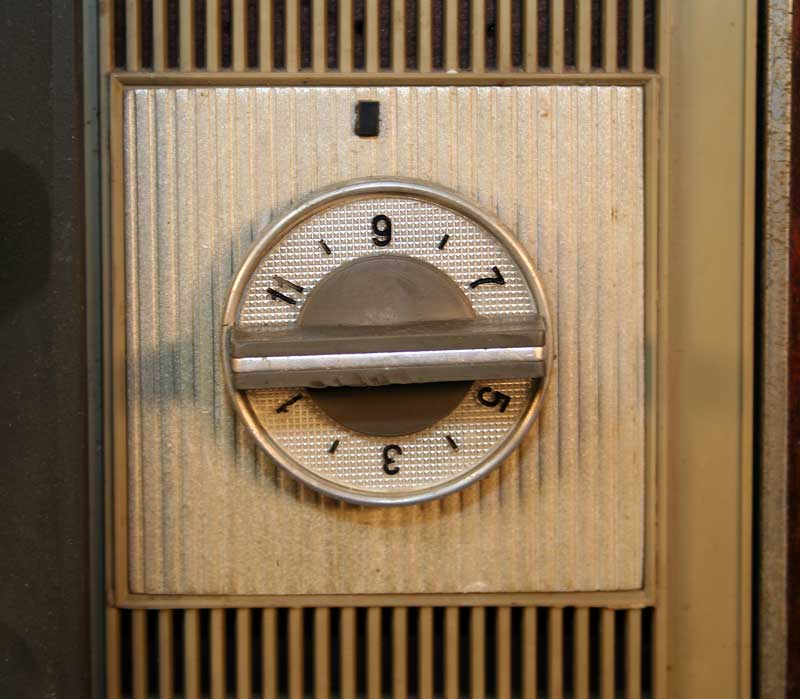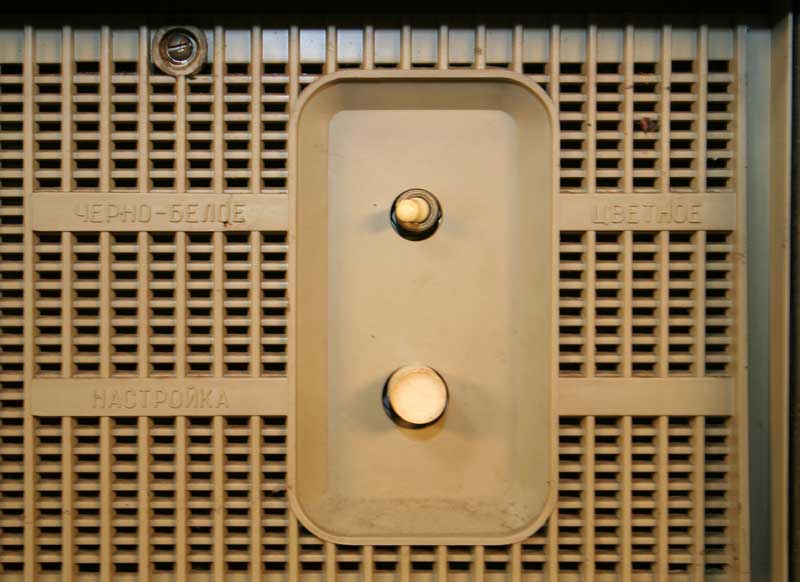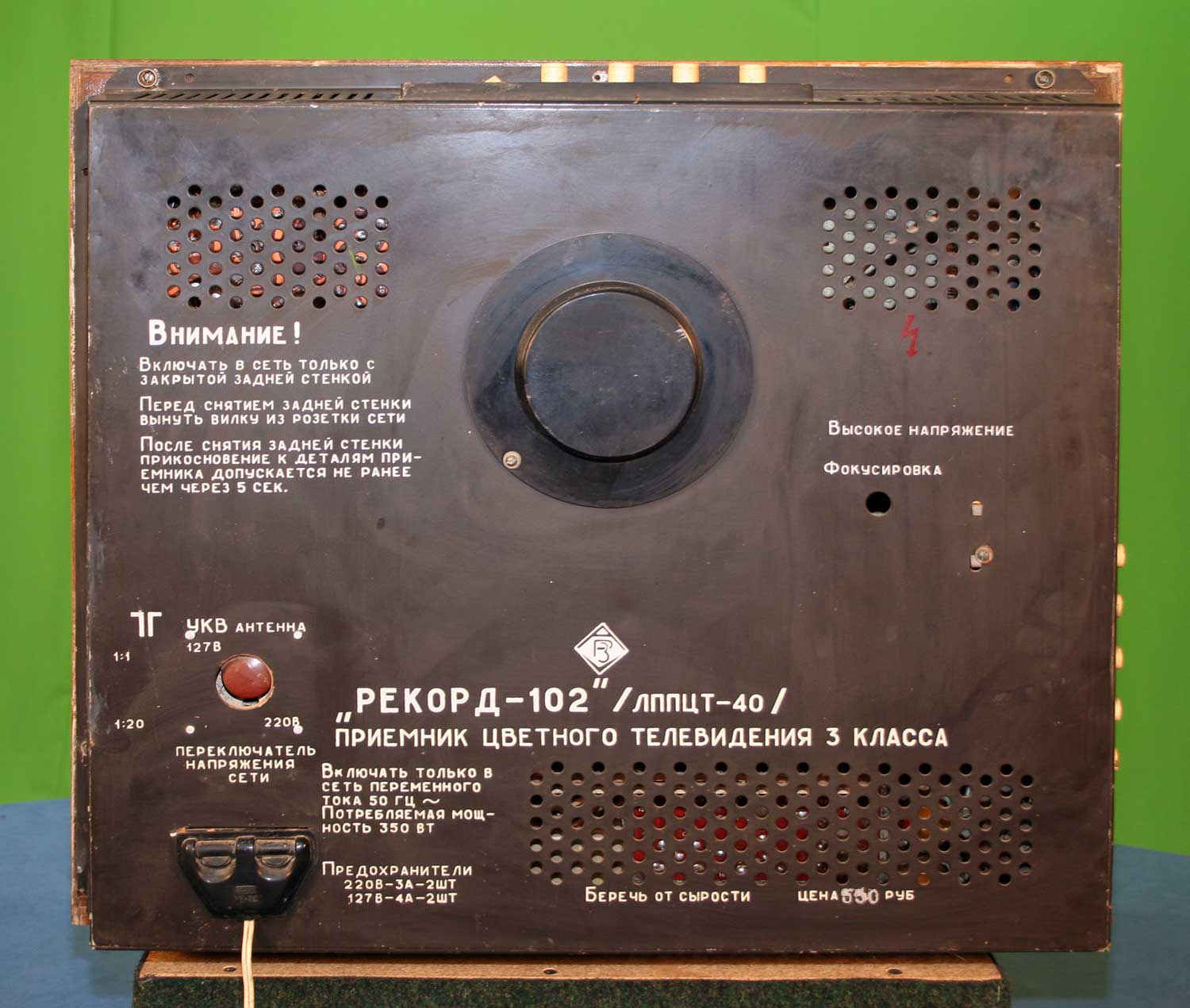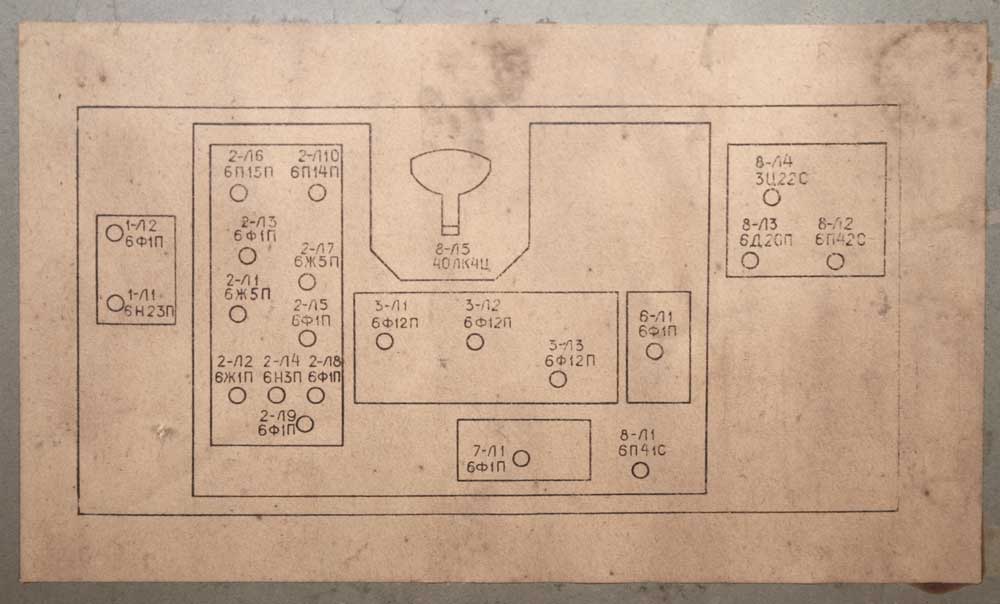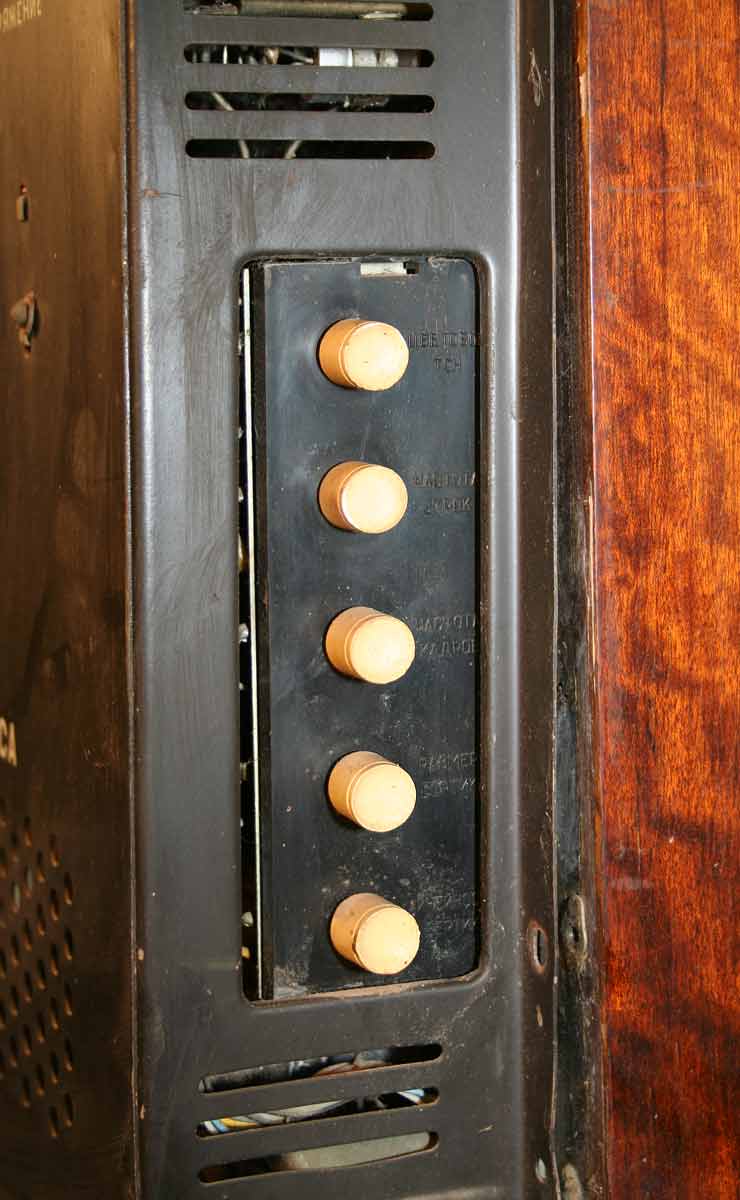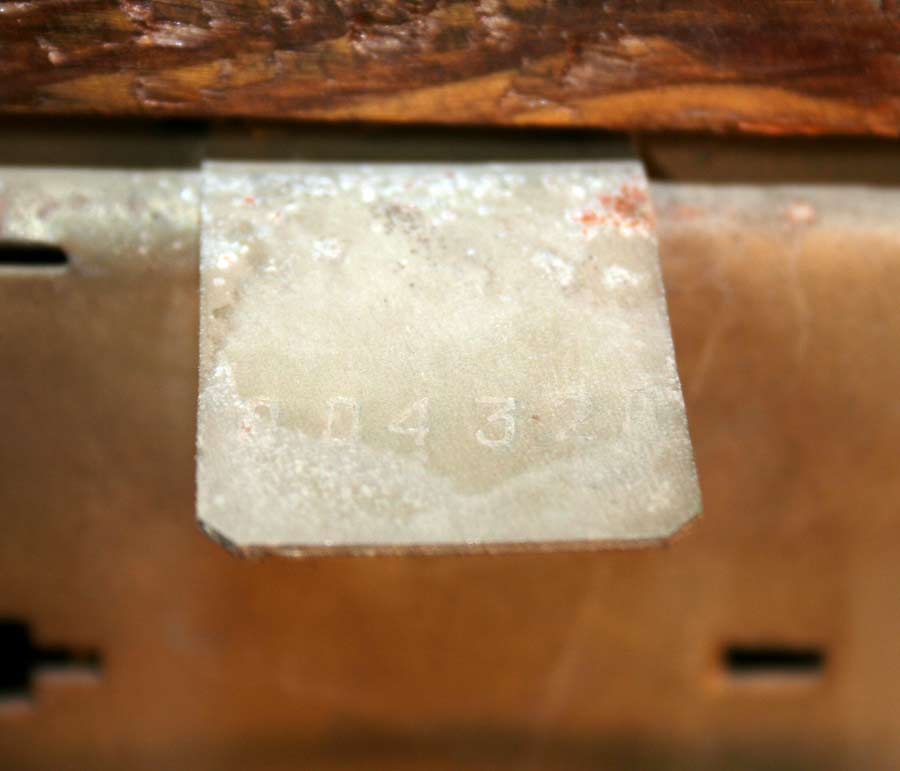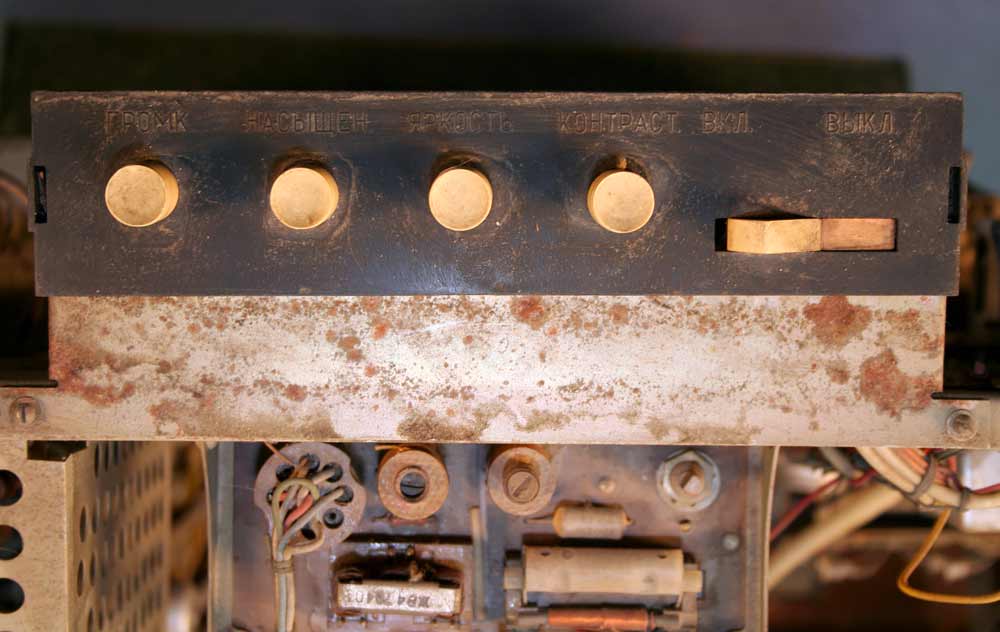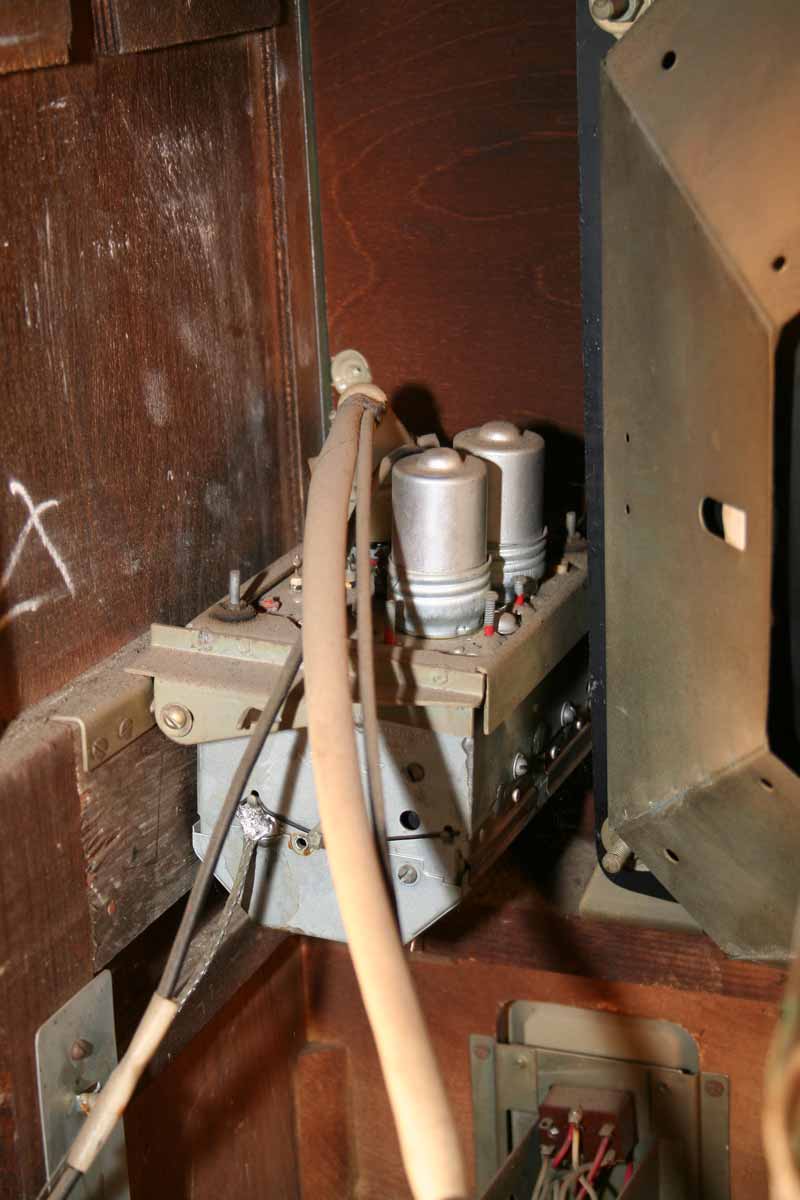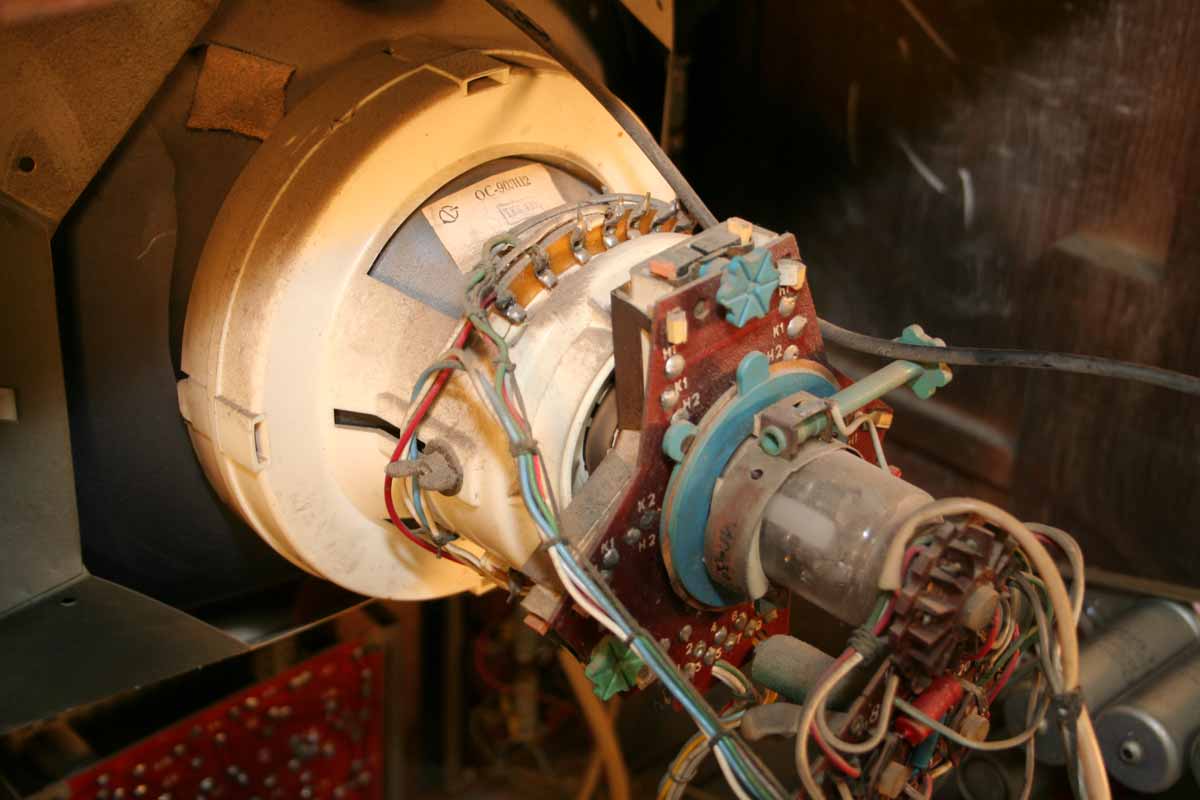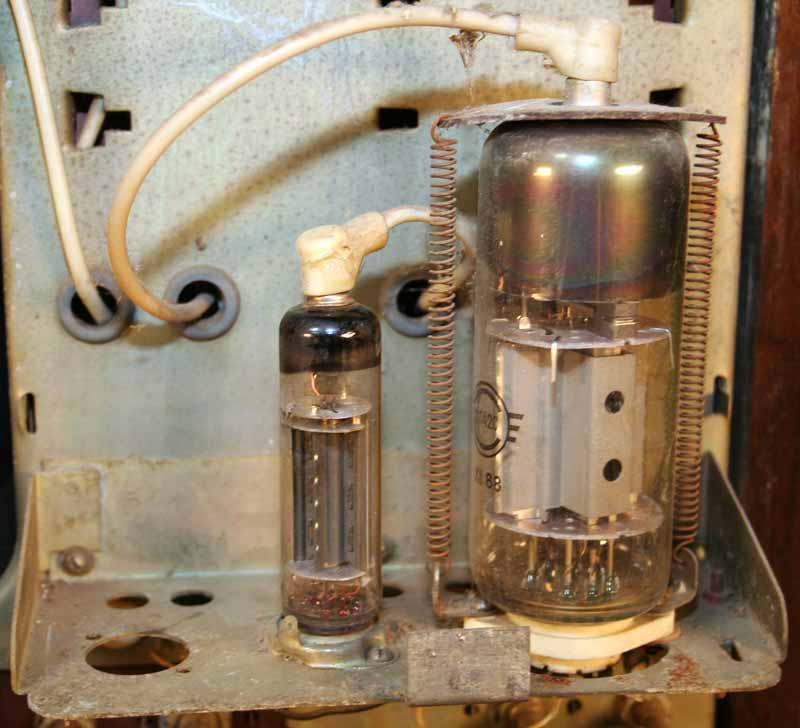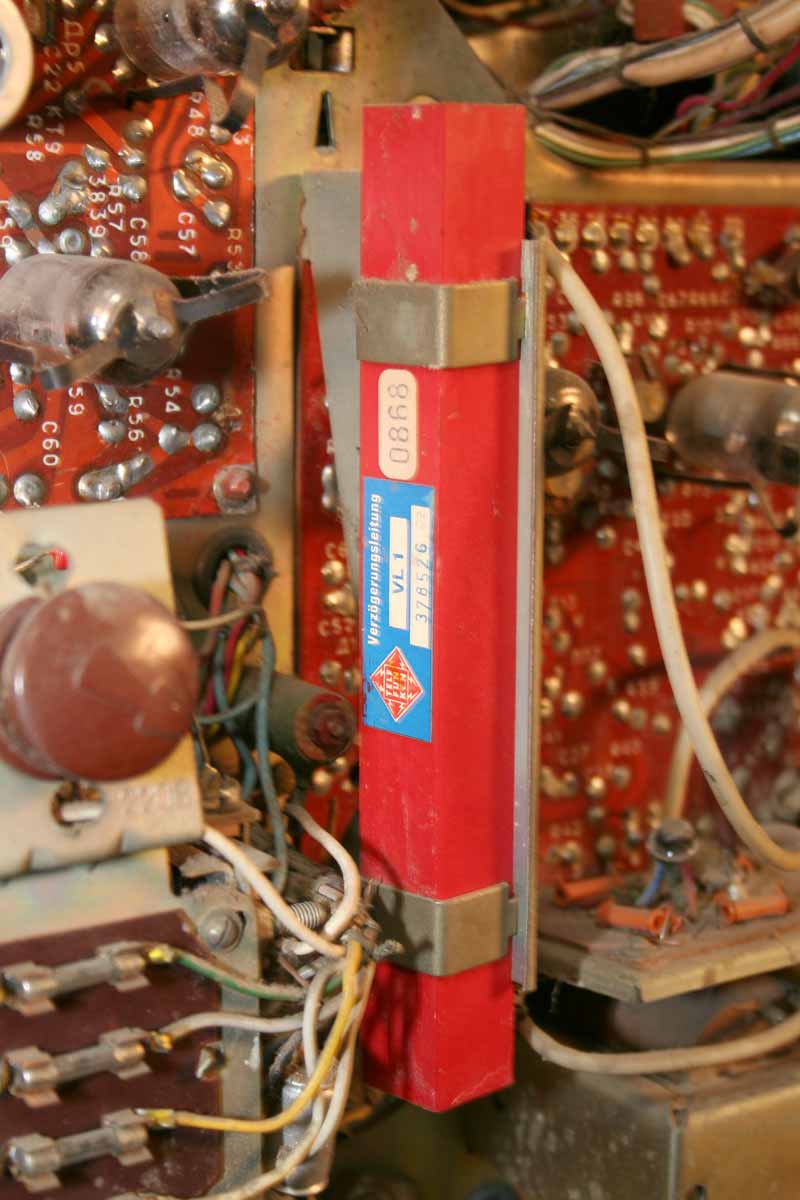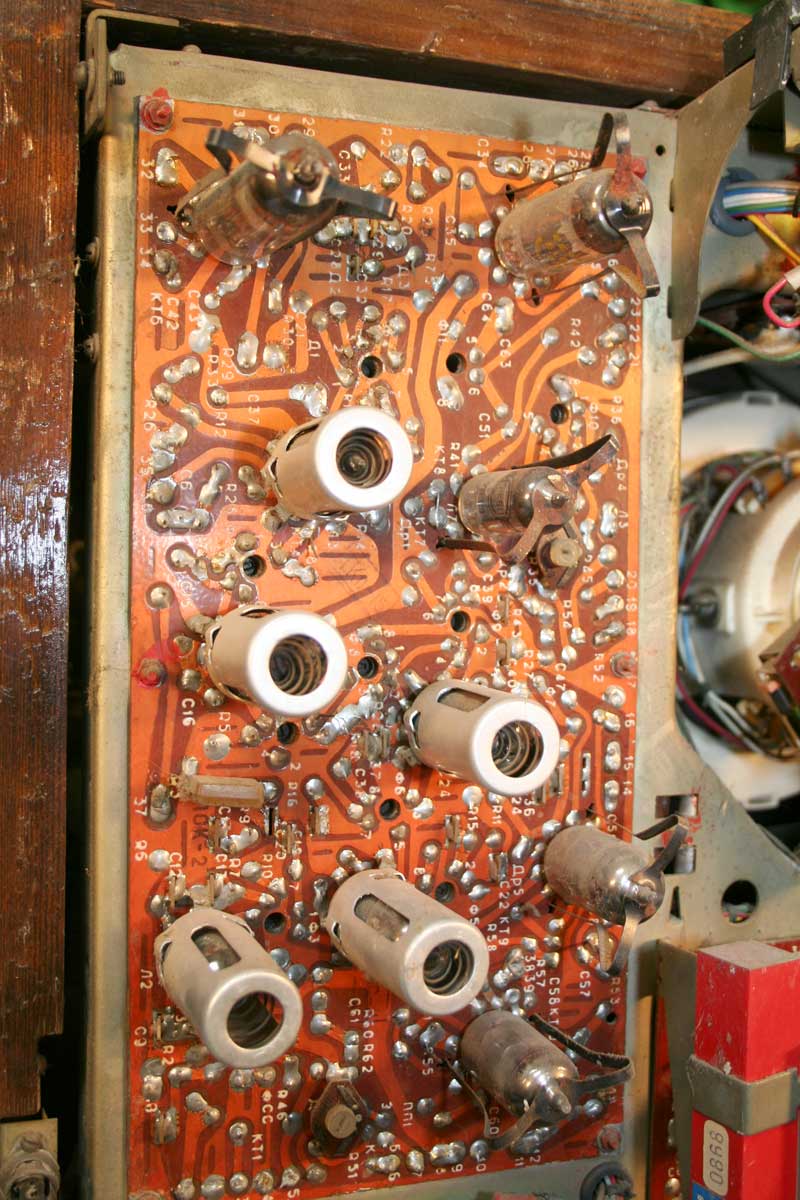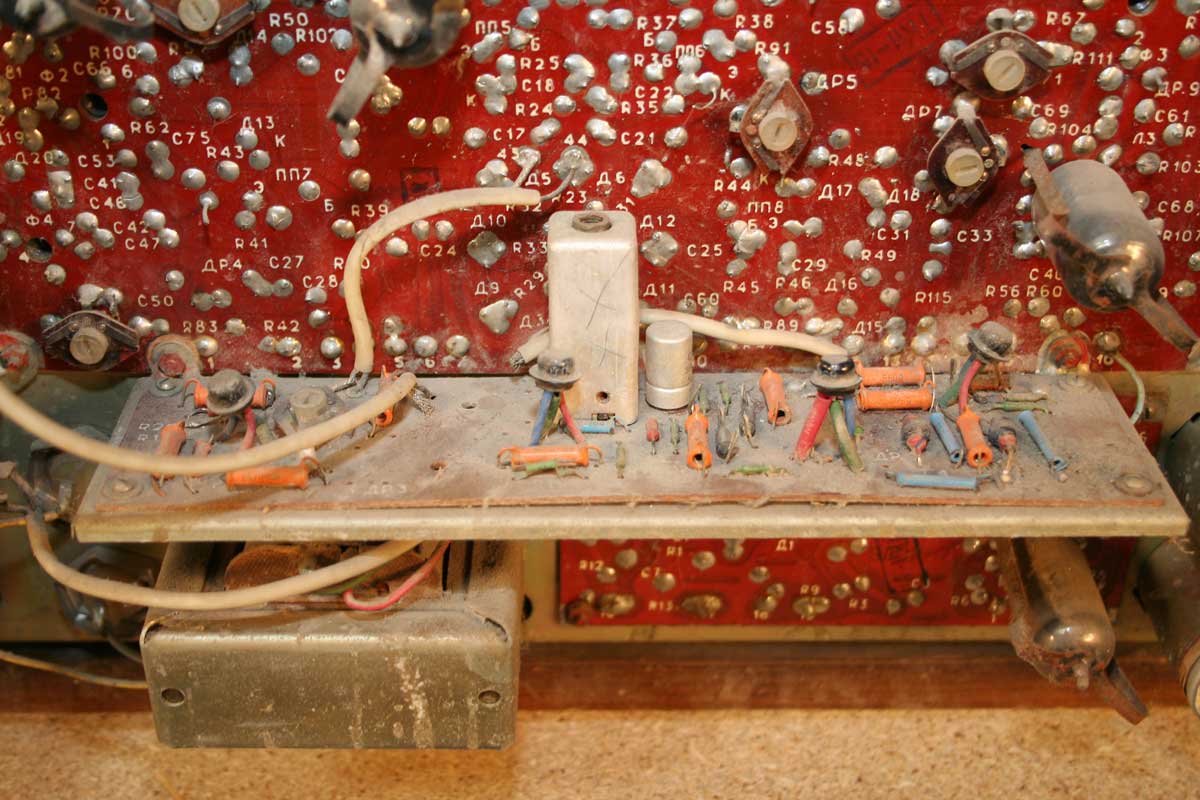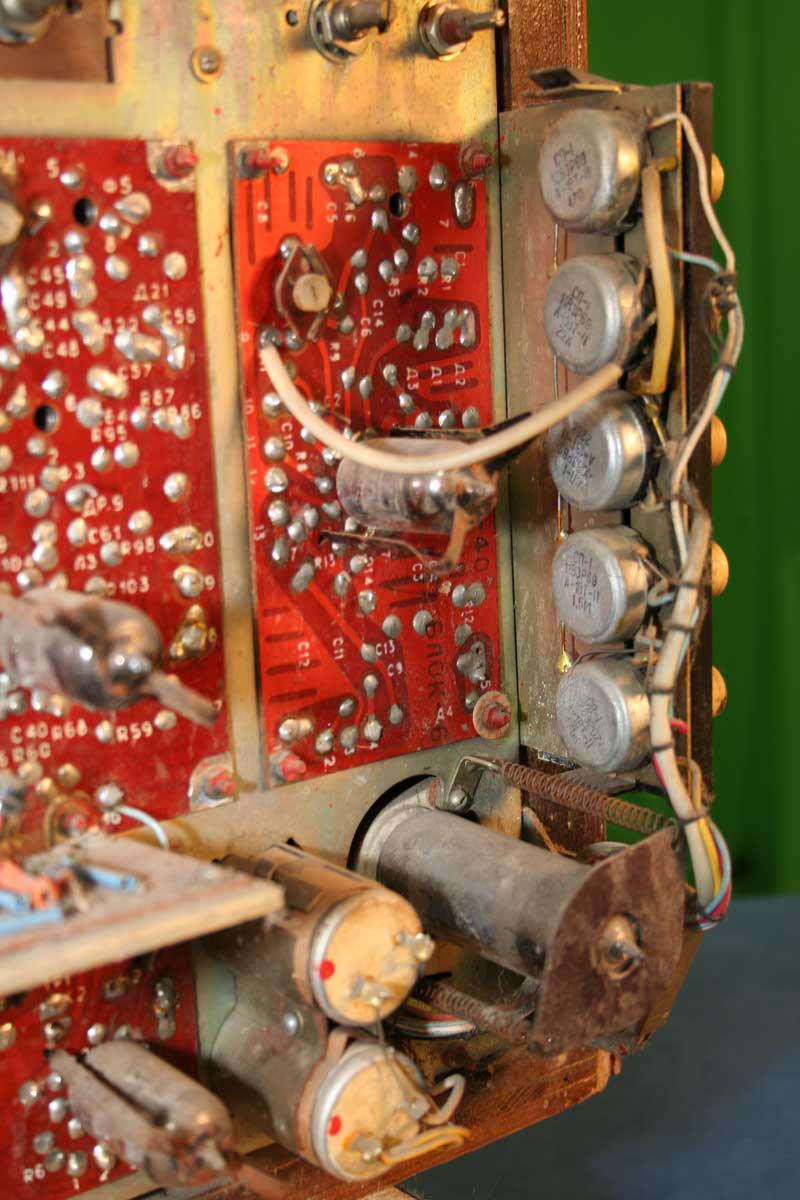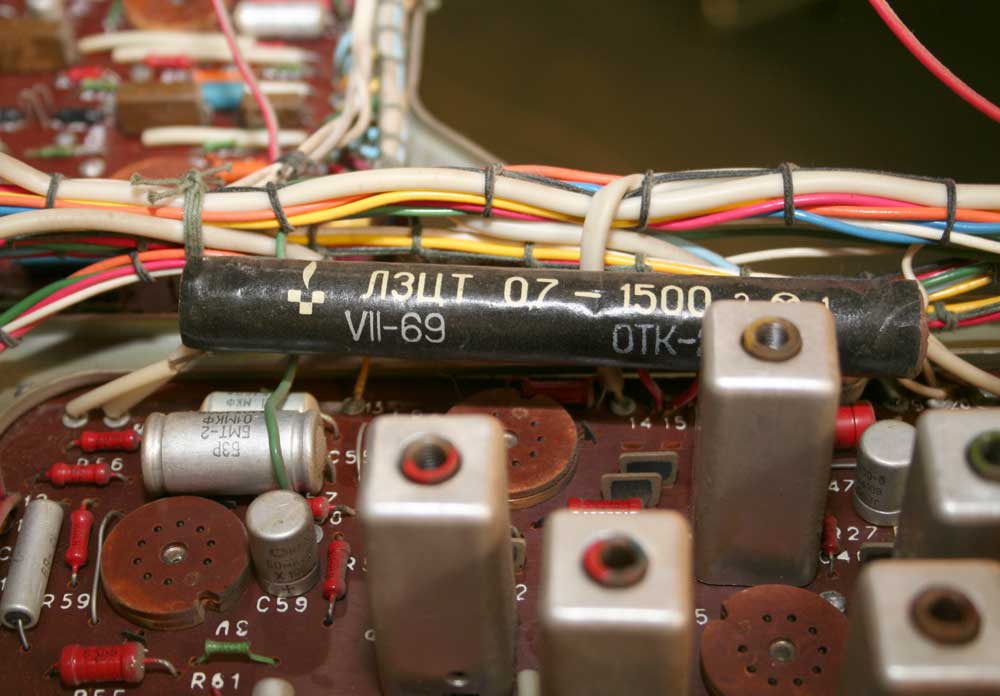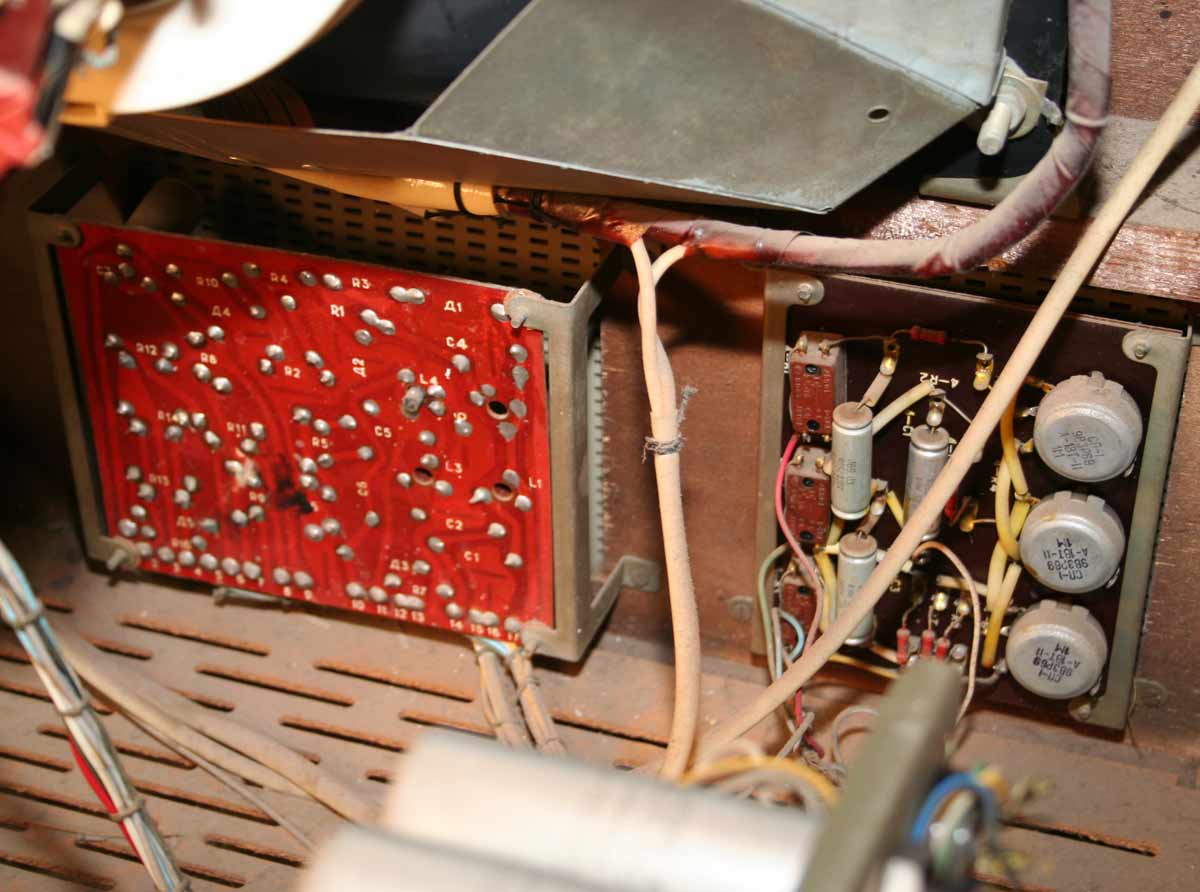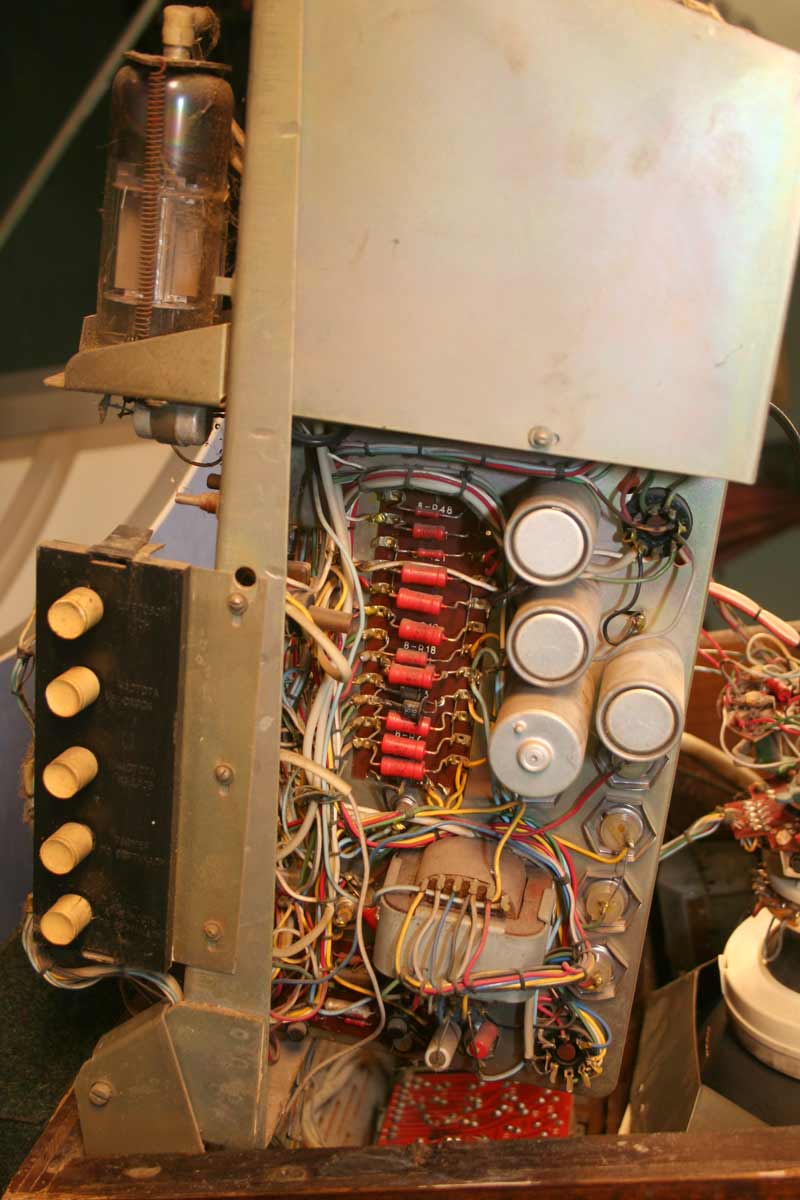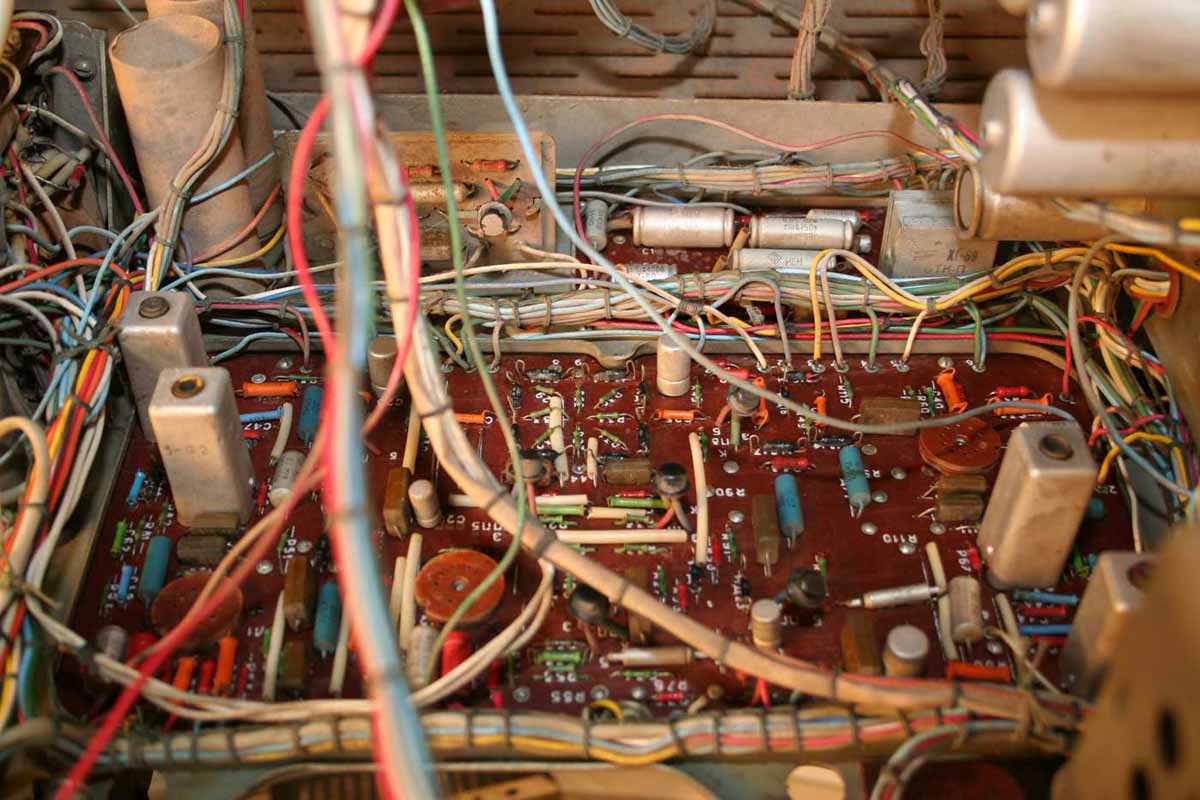TV receiver of color image "Record-101".
Color TVsDomesticThe television receiver of the color image "Record-101" from the beginning of 1970 produced the Aleksandrovsky radio plant. Since June 1969, work began on the creation of a mass and inexpensive color TV, which was soon put on the assembly line. Color TV Record-101 (TsT-40) is designed to receive color and b / w programs in any of the 12 channels of the MV range. It uses a 40LK2Ts kinescope with a beam deflection angle of 70 degrees, 29 radio tubes. Unlike similar TVs from other factories, this TV did not have transistors. The design initially turned out to be not entirely successful. With a power consumption of 360 watts, the TV generated a lot of heat and had a large body, comparable to models on a 59 cm picture tube diagonally. The protruding neck of the kinescope had a size of 30 cm, which was not particularly convenient for transportation and operation. The kinescope often failed and after 2 ... 3 months, or even earlier, lost some of its color properties. The TV Record-101 was somewhat cheaper than other TVs, which attracted buyers. Already in September 1970, mainly due to unpromising and technical reasons, the TV was discontinued and replaced by a more advanced color TV Record-102. Initially, the new TV was designed with the same design as the main image on the left, but a TV with the design of the base model went into production. In the modernized color TV Record-102, the same diagonal, but more advanced 40LK4Ts kinescope was used, with a beam deflection angle of 90 degrees, 21 radio tubes and 15 transistors. Compared to the previous TV, the new model has significantly reduced dimensions, weight and power consumption from the electrical network. Almost all the shortcomings of the previous model were eliminated and some innovations were introduced.